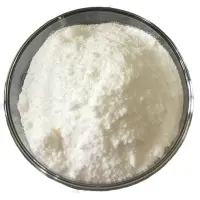-
Categories
-
Pharmaceutical Intermediates
-
Active Pharmaceutical Ingredients
-
Food Additives
- Industrial Coatings
- Agrochemicals
- Dyes and Pigments
- Surfactant
- Flavors and Fragrances
- Chemical Reagents
- Catalyst and Auxiliary
- Natural Products
- Inorganic Chemistry
-
Organic Chemistry
-
Biochemical Engineering
- Analytical Chemistry
-
Cosmetic Ingredient
- Water Treatment Chemical
-
Pharmaceutical Intermediates
Promotion
ECHEMI Mall
Wholesale
Weekly Price
Exhibition
News
-
Trade Service
Lupus nephritis (LN) is kidney damage caused by systemic lupus erythematosus, which mainly manifests as hematuria, proteinuria, edema, hypertension, and renal insufficiency
.
Existing induction therapy programs have a low complete remission rate for proliferative lupus nephritis, and LN is prone to relapse
.
According to the "Guidelines for the Diagnosis and Treatment of Lupus Nephritis in China (2019)", the recurrence rate can reach 33%-40%
.
Recently, the Rheumatology Branch of the Chinese Medical Association formulated and issued the "Regulations for the Diagnosis and Treatment of Lupus Nephritis" (hereinafter referred to as the "Regulations"), which aims to improve the treatment level of LN, reduce recurrence, and improve patient prognosis
.
"Specifications" put forward the following treatment points: the treatment of lupus nephritis should be based on the pathological type and pathological activity / chronicity to develop an individualized treatment plan
.
The treatment of proliferative lupus nephritis uses hormones combined with mycophenolate mofetil or cyclophosphamide.
If the effect is not good, calcineurin inhibitor or rituximab, or a multi-target combination plan can be used
.
Maintenance treatment of lupus nephritis can be treated with low-dose hormones (2.
5-5.
0 mg/d) combined with mycophenolate mofetil or azathioprine
.
At present, there is a tendency to reduce the amount of hormones in lupus nephritis inducing remission and maintenance treatment programs
.
The pathological type of LN and the standard of activity/chronic degree The pathological classification of LN is still based on the recommendations of the International Society of Nephrology/Renal Pathology Working Group (ISN/RPS) in 2003 (Table 1)
.
Similar to the 2019 guidelines, the specifications also adopted the 2018 ISN/RPS's partial revision of the pathological classification of lupus nephritis and the National Institutes of Health (NIH) renal tissue activity/chronicity scoring system (Table 2)
.
LN treatment principles and goals The treatment of lupus nephritis includes two stages: induction of remission and maintenance treatment.
The treatment goals are to reduce urine protein, protect the kidneys, prevent or delay the deterioration of renal function and improve the patient's prognosis
.
Compared with the 2019 guidelines, the "Specifications" based on the 2019 European Anti-Rheumatic Alliance/European Kidney Association and the European Dialysis and Transplant Association guidelines for the treatment of lupus nephritis, giving more detailed LN induction remission treatment goals: start treatment 3 Urinary protein is reduced by at least 25% within one month, and over 50% at six months.
Random urine protein/creatinine ratio (UPCR) <500mg/g at 12 months
.
Similar to the 2019 guidelines, the standard for complete remission is still urine protein <0.
5g/24h or random urine UPCR <500mg/g
.
If LN patients present with massive proteinuria (>3.
5g/24h), the time to complete remission can be extended by 6 months, that is, the therapeutic effect will be evaluated after 18 months of treatment
.
Maintenance treatment after remission should be ≥3 years
.
The specific treatment of LN suggests that glucocorticoids (hereinafter referred to as hormones) and hydroxychloroquine are still the basic drugs for LN
.
There is no uniform opinion on the usage and dosage of hormones
.
Generally take 0.
5~1.
0mg/kg/d orally (take prednisone as an example), start to reduce the dose according to the condition for 4~6 weeks, and reduce the dose by 10% every 1~2 weeks to the lowest maintenance dose (≤7.
5mg/d) Maintenance treatment
.
The general dose of hydroxychloroquine does not exceed 5mg/kg/d, divided into 1 to 2 times orally
.
The choice of immunosuppressive therapy is mainly based on the type of kidney pathology and the activity of the disease, combined with extrarenal disease
.
Commonly used immunosuppressants are mycophenolate mofetil (MMF), cyclophosphamide (CYC), azathioprine (AZA), calcineurin inhibitor (CNI) and so on
.
The treatment of proliferative LN (type Ⅲ/Ⅳ±Ⅴ) can be treated with hormone combined with MMF/AZA.
If the effect is not good, CNI or rituximab can be used, or a multi-target combination plan (hormone + MMF + other Crolimus)
.
The 2019 guidelines recommend a multi-target combination regimen as the preferred induction regimen for type Ⅲ and type Ⅳ, type Ⅲ/Ⅳ+V (especially nephrotic syndrome)) LN, while the norms only use it as an alternative treatment for proliferative LN (table 3)
.
Table 3 Standards and Recommendations for Induction Therapy in the 2019 Guidelines The 2019 Guidelines point out that it is best to reduce the dose of long-term maintenance hormones to less than 7.
5 mg/d, and stop if conditions permit
.
The "Specifications" recommends the use of a smaller amount of hormones: maintenance treatment can use low-dose hormones (2.
5~5.
0mg/d) combined with MMF/AZA
.
Other treatment of LN patients with urine protein>0.
5g/24h should use angiotensin converting enzyme inhibitor (ACEI)/angiotensin receptor antagonist (ARB) drugs, blood pressure should be <130/80mmHg
.
Patients with positive antiphospholipid antibodies can be given a small dose of aspirin
.
Patients with large proteinuria and serum albumin <20g/L have a higher risk of thrombosis, and anticoagulation therapy may be considered
.
With the continuous optimization of the treatment of lupus nephritis, the remission rate of patients has increased significantly.
The 10-year renal survival rate of lupus nephritis in China can reach 81%~98%
.
In the future, as more treatment options are explored and optimized, it is believed that the current high recurrence rate of lupus nephritis will also be greatly improved
.
References: 1.
Zhang Hui, Yang Niansheng, Lu Jing, et al.
Standards for diagnosis and treatment of lupus nephritis[J].
Chinese Journal of Internal Medicine, 2021,60(9):784-790.
2.
Chinese Lupus Nephritis Diagnosis and Treatment Guidelines Compilation Group.
Chinese Lupus Guidelines for the diagnosis and treatment of nephritis[J].
Chinese Medical Journal,2019,99(44):3441-3455.
.
Existing induction therapy programs have a low complete remission rate for proliferative lupus nephritis, and LN is prone to relapse
.
According to the "Guidelines for the Diagnosis and Treatment of Lupus Nephritis in China (2019)", the recurrence rate can reach 33%-40%
.
Recently, the Rheumatology Branch of the Chinese Medical Association formulated and issued the "Regulations for the Diagnosis and Treatment of Lupus Nephritis" (hereinafter referred to as the "Regulations"), which aims to improve the treatment level of LN, reduce recurrence, and improve patient prognosis
.
"Specifications" put forward the following treatment points: the treatment of lupus nephritis should be based on the pathological type and pathological activity / chronicity to develop an individualized treatment plan
.
The treatment of proliferative lupus nephritis uses hormones combined with mycophenolate mofetil or cyclophosphamide.
If the effect is not good, calcineurin inhibitor or rituximab, or a multi-target combination plan can be used
.
Maintenance treatment of lupus nephritis can be treated with low-dose hormones (2.
5-5.
0 mg/d) combined with mycophenolate mofetil or azathioprine
.
At present, there is a tendency to reduce the amount of hormones in lupus nephritis inducing remission and maintenance treatment programs
.
The pathological type of LN and the standard of activity/chronic degree The pathological classification of LN is still based on the recommendations of the International Society of Nephrology/Renal Pathology Working Group (ISN/RPS) in 2003 (Table 1)
.
Similar to the 2019 guidelines, the specifications also adopted the 2018 ISN/RPS's partial revision of the pathological classification of lupus nephritis and the National Institutes of Health (NIH) renal tissue activity/chronicity scoring system (Table 2)
.
LN treatment principles and goals The treatment of lupus nephritis includes two stages: induction of remission and maintenance treatment.
The treatment goals are to reduce urine protein, protect the kidneys, prevent or delay the deterioration of renal function and improve the patient's prognosis
.
Compared with the 2019 guidelines, the "Specifications" based on the 2019 European Anti-Rheumatic Alliance/European Kidney Association and the European Dialysis and Transplant Association guidelines for the treatment of lupus nephritis, giving more detailed LN induction remission treatment goals: start treatment 3 Urinary protein is reduced by at least 25% within one month, and over 50% at six months.
Random urine protein/creatinine ratio (UPCR) <500mg/g at 12 months
.
Similar to the 2019 guidelines, the standard for complete remission is still urine protein <0.
5g/24h or random urine UPCR <500mg/g
.
If LN patients present with massive proteinuria (>3.
5g/24h), the time to complete remission can be extended by 6 months, that is, the therapeutic effect will be evaluated after 18 months of treatment
.
Maintenance treatment after remission should be ≥3 years
.
The specific treatment of LN suggests that glucocorticoids (hereinafter referred to as hormones) and hydroxychloroquine are still the basic drugs for LN
.
There is no uniform opinion on the usage and dosage of hormones
.
Generally take 0.
5~1.
0mg/kg/d orally (take prednisone as an example), start to reduce the dose according to the condition for 4~6 weeks, and reduce the dose by 10% every 1~2 weeks to the lowest maintenance dose (≤7.
5mg/d) Maintenance treatment
.
The general dose of hydroxychloroquine does not exceed 5mg/kg/d, divided into 1 to 2 times orally
.
The choice of immunosuppressive therapy is mainly based on the type of kidney pathology and the activity of the disease, combined with extrarenal disease
.
Commonly used immunosuppressants are mycophenolate mofetil (MMF), cyclophosphamide (CYC), azathioprine (AZA), calcineurin inhibitor (CNI) and so on
.
The treatment of proliferative LN (type Ⅲ/Ⅳ±Ⅴ) can be treated with hormone combined with MMF/AZA.
If the effect is not good, CNI or rituximab can be used, or a multi-target combination plan (hormone + MMF + other Crolimus)
.
The 2019 guidelines recommend a multi-target combination regimen as the preferred induction regimen for type Ⅲ and type Ⅳ, type Ⅲ/Ⅳ+V (especially nephrotic syndrome)) LN, while the norms only use it as an alternative treatment for proliferative LN (table 3)
.
Table 3 Standards and Recommendations for Induction Therapy in the 2019 Guidelines The 2019 Guidelines point out that it is best to reduce the dose of long-term maintenance hormones to less than 7.
5 mg/d, and stop if conditions permit
.
The "Specifications" recommends the use of a smaller amount of hormones: maintenance treatment can use low-dose hormones (2.
5~5.
0mg/d) combined with MMF/AZA
.
Other treatment of LN patients with urine protein>0.
5g/24h should use angiotensin converting enzyme inhibitor (ACEI)/angiotensin receptor antagonist (ARB) drugs, blood pressure should be <130/80mmHg
.
Patients with positive antiphospholipid antibodies can be given a small dose of aspirin
.
Patients with large proteinuria and serum albumin <20g/L have a higher risk of thrombosis, and anticoagulation therapy may be considered
.
With the continuous optimization of the treatment of lupus nephritis, the remission rate of patients has increased significantly.
The 10-year renal survival rate of lupus nephritis in China can reach 81%~98%
.
In the future, as more treatment options are explored and optimized, it is believed that the current high recurrence rate of lupus nephritis will also be greatly improved
.
References: 1.
Zhang Hui, Yang Niansheng, Lu Jing, et al.
Standards for diagnosis and treatment of lupus nephritis[J].
Chinese Journal of Internal Medicine, 2021,60(9):784-790.
2.
Chinese Lupus Nephritis Diagnosis and Treatment Guidelines Compilation Group.
Chinese Lupus Guidelines for the diagnosis and treatment of nephritis[J].
Chinese Medical Journal,2019,99(44):3441-3455.







